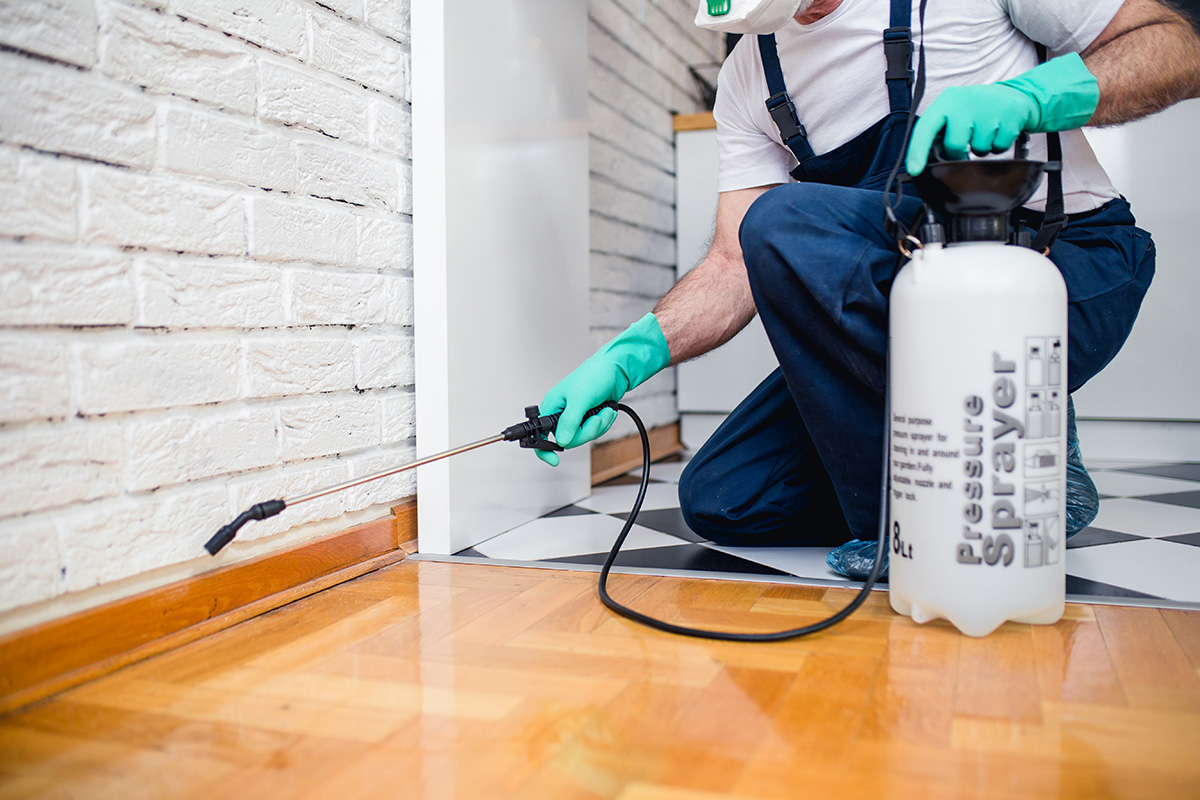A1 Bed Bug Exterminator Charlotte - Effective and Cost Effective Services
A1 Bed Bug Exterminator Charlotte - Effective and Cost Effective Services
Blog Article
Bed Pest Treatment Breakdown: Contrasting Chemical Vs. Non-Chemical Solutions
In the world of parasite control, particularly when managing the relentless issue of bed pests, the option in between chemical and non-chemical therapy services can be a pivotal one. Both approaches provide distinct advantages and downsides, influencing variables such as performance, safety and security considerations, and general cost. By analyzing the nuanced details of each technique, a more clear understanding of which course to go after in attending to a bed insect problem can be attained.
Efficiency of Chemical Treatments
Chemical treatments for bed pest problems have been commonly identified for their rapid and potent effectiveness in getting rid of these insects. When thinking about the effectiveness of chemical treatments, it is important to recognize that they can offer a quick and comprehensive option to a bed bug problem.
Additionally, chemical treatments have the benefit of supplying residual impacts, suggesting that they can remain to get rid of bed bugs even after the first application. This recurring activity is particularly beneficial in combating any type of potential re-infestations. Furthermore, the rapid activity of chemical therapies can bring relief to people facing serious bed pest invasions, allowing them to restore control of their space quickly.
Security Concerns With Chemical Solutions
One crucial element that needs careful factor to consider when utilizing chemical services for bed bug therapy is ensuring the safety and security of passengers and the atmosphere. Exposure to specific chemicals made use of in bed bug treatments can lead to breathing issues, skin irritability, or various other damaging reactions, particularly in people with pre-existing problems or level of sensitivities.
In addition, the ecological impact of chemical services is another considerable consideration. Some pesticides used in bed pest therapies may be damaging to helpful bugs, wildlife, and communities if they leach right into the soil or water supply. It is necessary to utilize chemical therapies carefully, complying with safety and security guidelines, and thinking about much less harmful options to reduce these risks and make sure the reliable and risk-free monitoring of bed bug infestations.
Advantages of Non-Chemical Techniques
Taking into consideration the potential safety worries and ecological influence linked with chemical services for bed insect treatment, exploring non-chemical approaches provides an encouraging option with numerous distinctive benefits. Non-chemical techniques offer a much safer choice for households, specifically those with kids, individuals, or animals delicate to severe chemicals. These strategies remove the dangers of exposure to hazardous compounds, reducing the potential for adverse health results. Moreover, non-chemical therapies are eco-friendly, as they do not add to air or water contamination, making them a lasting selection for parasite control.
Furthermore, non-chemical options can be efficient in targeting bed bugs, consisting of hard-to-reach locations where chemical treatments may not permeate. Approaches such as warm treatment, vacuuming, vapor cleansing, and cushion encasements offer extensive eradication without the use of harmful chemicals. Moreover, non-chemical strategies can be much less turbulent, needing very little preparation and permitting quicker reentry right into treated areas. Generally, going with non-chemical bed insect treatment methods not just focuses on safety and environmental management but also ensures efficient and detailed bug control.
Limitations of Non-Chemical Treatments

In addition, non-chemical therapies frequently call for several applications to achieve effective removal. This can be lengthy and might not constantly guarantee complete elimination of all bed pests and their eggs, particularly in covert or hard-to-reach areas.
Additionally, the success of non-chemical treatments heavily depends on correct implementation and thoroughness, which can be testing for people without specialist proficiency. Insufficient application of non-chemical approaches might result in incomplete removal, resulting in persistent problems and the requirement for added treatments.
For that reason, while non-chemical treatments have their this website benefits, it is important to recognize these restrictions and consider them when establishing the most efficient strategy for managing bed pest problems.
Price Comparison: Chemical Vs. Non-Chemical Options
Offered the restrictions associated with non-chemical treatments, a necessary facet to review in the context of bed bug monitoring is the expense comparison between chemical and non-chemical choices. In contrast, non-chemical treatments like warm therapy or vapor can be a lot more costly, with expenses varying from $1,000 to $6,000 for mice a whole home. While the first expense of chemical therapies may appear lower, numerous treatments may be required to totally get rid of the problem, possibly increasing the overall expense.
Final Thought

Taking into consideration the possible safety problems and environmental influence linked with chemical solutions for bed pest treatment, exploring non-chemical methods presents an appealing option with numerous unique benefits.Provided the restrictions linked with non-chemical therapies, an important element to Clicking Here review in the context of bed bug administration is the cost comparison between chemical and non-chemical options. In contrast, non-chemical treatments like heat treatment or steam can be a lot more costly, with prices varying from $1,000 to $6,000 for a whole home. While the first expense of chemical treatments might appear lower, numerous therapies might be called for to totally eradicate the problem, potentially raising the overall price.In verdict, when comparing chemical and non-chemical bed bug treatment choices, it is necessary to consider effectiveness, safety, benefits, constraints, and price.
Report this page